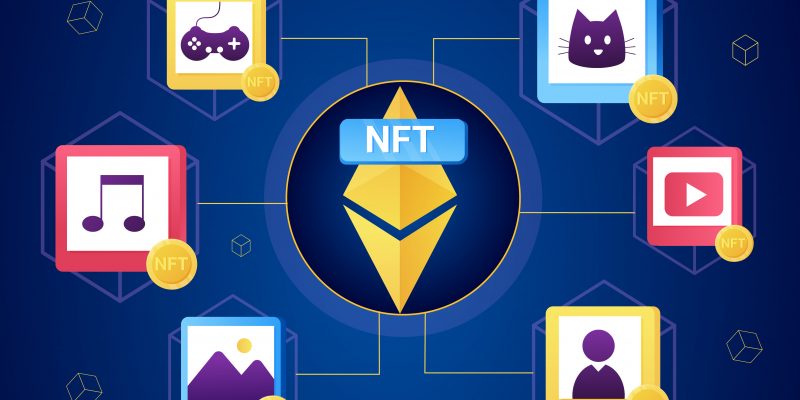What Are The Components Of NFTS, And How Does It Ensure Single Ownership Of Virtual Assets?
NFTs (non-fungible tokens) is the newest entity creating a wave in the blockchain. It carries great promise and is welcomed as the digital solution to collectables. This latest digital craze relies on several key factors behind the hype, similar to how Bitcoin was heralded. First, it completely establishes its own as one of the prime digital assets in the art world. The record of their existence lives on blockchains like earlier, where individuals used to collect assets such as land or jewelry now, this trend has changed and converted into collectables for some years. The legality of the ownership of these digital or virtual assets is an integral process wherein the authenticity of these assets has been facilitated. Thus, leaving no room for any risk of fraud in transferring the ownership of these assets. Therefore, the NFTs are making waves and implemented in digital identity credentials and land titling.
NFTs has some distinctive features that make them different from other assets, such as –
- Every NFT has a distinct and unique attribute where no two NFTs are considered alike.
- They can be utilized from several platforms as they have the certificate of ownership available on different networks.
- You can’t buy or transfer only a portion of them; you have to sell the whole.
- You even get legal authorization wherein the asset ownership is guaranteed.
- They are easily transferred to anyone and are so secured that they remain unaffected by fraud.
Technical Components of NFTs
- Blockchain
All the records and transactions of NFTs are saved on a decentralized ledger called the blockchain. Every new transaction is added down the chain, thus growing the database. Here Ethereum is considered to be ore secure scheme to execute smart contracts.
- Smart Contract
Some NFTs like bonds, property rights, sensitive documents are stored in hardware or software like Blockchain-based smart contracts. Here the transitions are verified and executed for digital negotiation that conducts fair exchanges without a trusted third party.
- Address and Transaction
Aiming to accelerate and execute thorough state transition, the address in a blockchain consists of a unique identifier similar to a bank account. These alphanumeric characters achieve complicated functionalities and consistently send the assets to another address.
Ensuring Single and Transferring ownership of NFTs
The right to claim the NFT can be issued if the author can transfer their entire copyright in work to an NFT holder. NFTs typically comprise a ledger or record of ownership, which mentions when you buy an NFT, it excludes others from claiming ownership of the NFT.
In what types are these non-fungible tokens being utilized?
- NFT event tickets — Help businesses distribute and sell tickets to events and, in due
course, eliminate fraud. Even there are infinite ways to collect from the post-purchase collection. - Fan/customer engagement – Represent exclusive collectables products through NFTs and deepen the engagement with the brand.
- In-game items – Most popular ones where NFTs are used widely are in video games. It has created a widely varied ecosystem that can help gamers sell and exchange at broader secondary markets.
- Digital collectables – NFTs can also be used to collect digital collectables that are sold by individuals or organizations that hold great importance.
- Credentialing – In most cases, NFTs can be utilized to acquire certifications and safeguard these credentials.
- Royalties – Lastly, NFTs can be owed in achievement to hold the prestige of royal
entitlement for a piece of art display.
What rights does ownership of an NFT confer?
The owner receives a hash code that recognizes him as the sole owner by getting the single ownership of virtual assets. The unique token associated with the particular digital asset now holds prominence to the new acquirer, but the intellectual rights are still owned by the artist who created it. Ownership of NFT assets can vary based on the transaction, which gives you a title to brag where you can claim the ownership of a virtual item is original and without an error.
How could NFTs impact businesses?
In a business scenario, NFTs can have the potential to use it as a tool for selling digital and physical merchandise. In addition, the tokenization of ownership could help assert that NFTs could become a valuable investment to secure their valuable entities. The underlying truth of NFTs is that they can transform supply chains and provide a new means of establishing ownership. So, now is the time to support NFTs and revolutionize the legality in the digital ownership chain.







